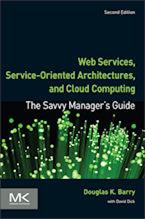When to Use EJB Accelerators with Java Application Servers
EJB accelerators can speed up the performance of Enterprise Java Beans (EJB). You should consider EJB accelerators if EJB performance is (or might be) a concern.
EJB accelerators can be part of most any J2EE enterprise architecture. To see how EJB accelerators can participate in an "in-line update" architecture, see J2EE Enterprise Architecture with In-Line Updates.
Also, EJB accelerators can be used to "stage" data. This would involve a temporary staging of data in the middle tier to avoid the Java object to table data conversion with an existing relational database. This data conversion can sometimes result in significant performance problems. This particularly true if the data in the EJBs is complex. If you are not familiar with the concept of complex data, see complex data. For an example of staging data, see J2EE enterprise architecture with staged data.
For more information on EJB accelerator data mapping, see EJB Accelerator Data Conversion.
Context for When to Use EJB Accelerators with Java Application Servers
Related Articles for When to Use EJB Accelerators with Java Application Servers
Author
Douglas K Barry
Principal
You may use this material for your work or classes. Reprint Policy. Be sure to check the menu at the left for other articles available on this site.
The Savvy Manager's Guide
Douglas K Barry is also the author of a book that explains Web Services, service-oriented architecture, and Cloud Computing in an easy-to-understand, non-technical manner.
Web Services, Service-Oriented Architectures, and Cloud Computing: The Savvy Manager's Guide (Second Edition)
by Douglas K Barry with David Dick
This is a guide for the savvy manager who wants to capitalize on the wave of change that is occurring with Web Services, service-oriented architecture, and—more recently—Cloud Computing. The changes wrought by these technologies will require both a basic grasp of the technologies and an effective way to deal with how these changes will affect the people who build and use the systems in our organizations. This book covers both issues. Managers at all levels of all organizations must be aware of both the changes that we are now seeing and ways to deal with issues created by those changes.

